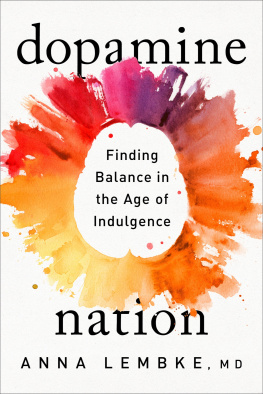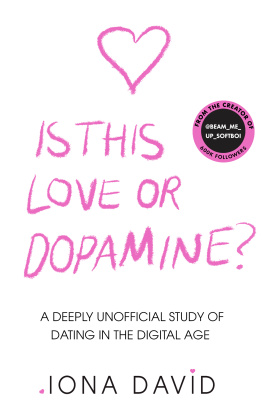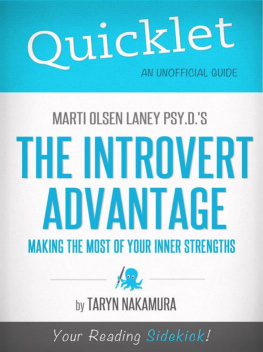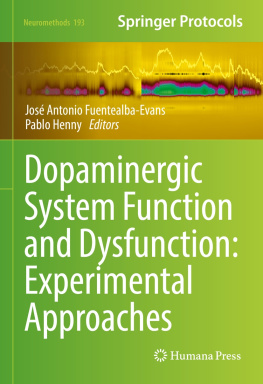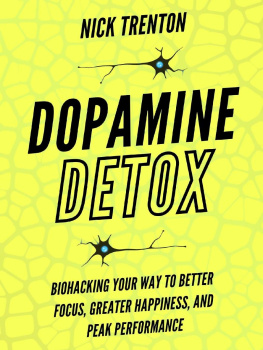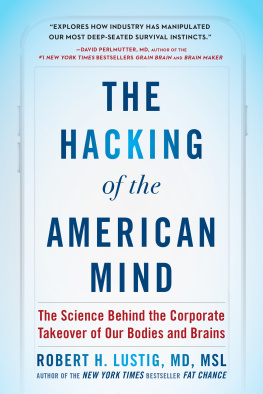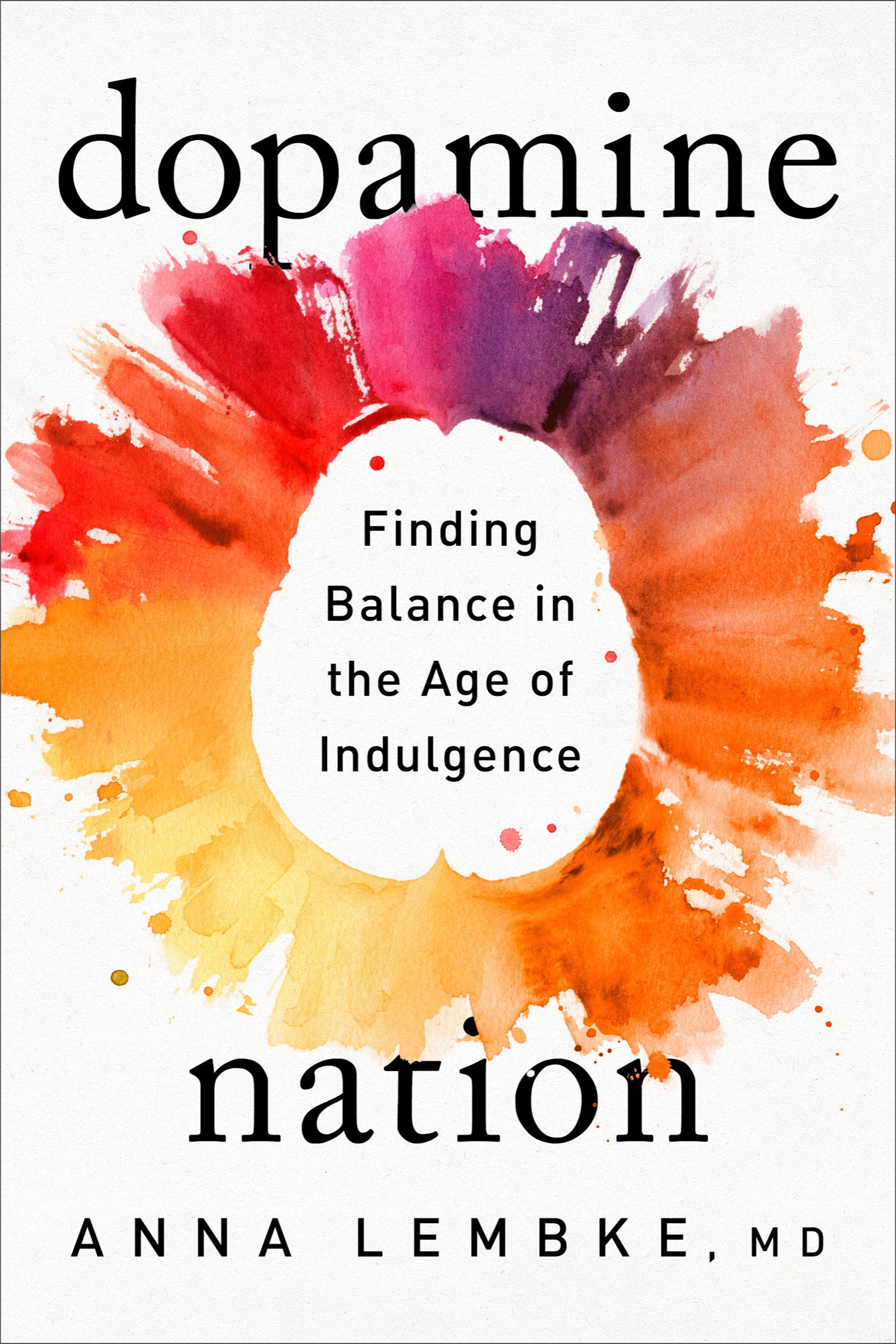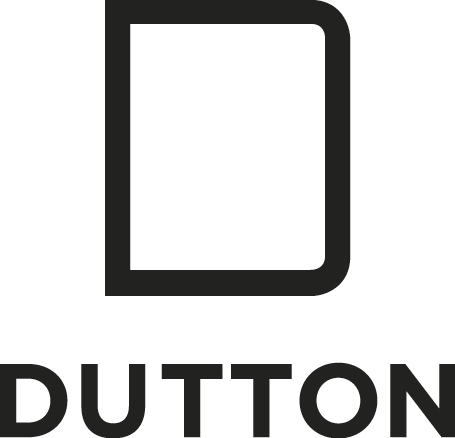
An imprint of Penguin Random House LLC
penguinrandomhouse.com

Copyright 2021 by Anna Lembke
Penguin supports copyright. Copyright fuels creativity, encourages diverse voices, promotes free speech, and creates a vibrant culture. Thank you for buying an authorized edition of this book and for complying with copyright laws by not reproducing, scanning, or distributing any part of it in any form without permission. You are supporting writers and allowing Penguin to continue to publish books for every reader.
DUTTON and the D colophon are registered trademarks of Penguin Random House LLC.
library of congress cataloging-in-publication data
Names: Lembke, Anna, 1967- author.
Title: Dopamine nation : finding balance in the age of indulgence / Anna Lembke, M.D.
Description: New York : Dutton, [2021] | Includes bibliographical references and index.
Identifiers: LCCN 2020041077 (print) | LCCN 2020041078 (ebook) | ISBN 9781524746728 (hardcover) | ISBN 9781524746735 (ebook)
Subjects: LCSH: Pleasure. | Pain. | Compulsive behavior. | InternetSocial aspects. | Substance abuse.
Classification: LCC BF515 .L46 2020 (print) | LCC BF515 (ebook) | DDC 152.4/2dc23
LC record available at https://lccn.loc.gov/2020041077
LC ebook record available at https://lccn.loc.gov/2020041078
book design by lorie pagnozzi, adapted for ebook by estelle malmed
While the author has made every effort to provide accurate telephone numbers, internet addresses, and other contact information at the time of publication, neither the publisher nor the author assumes any responsibility for errors or for changes that occur after publication. Further, the publisher does not have any control over and does not assume any responsibility for author or third-party websites or their content.
Neither the publisher nor the author is engaged in rendering professional advice or services to the individual reader. The ideas, procedures, and suggestions contained in this book are not intended as a substitute for consulting with your physician. All matters regarding your health require medical supervision. Neither the author nor the publisher shall be liable or responsible for any loss or damage allegedly arising from any information or suggestion in this book.
pid_prh_5.7.1_c0_r0
For Mary, James, Elizabeth, Peter, and little Lucas
CONTENTS
INTRODUCTION
The Problem
Feelin good, feelin good, all the money in the world spent on feelin good.
LEVON HELM
This book is about pleasure. Its also about pain. Most important, its about the relationship between pleasure and pain, and how understanding that relationship has become essential for a life well lived.
Why?
Because weve transformed the world from a place of scarcity to a place of overwhelming abundance: Drugs, food, news, gambling, shopping, gaming, texting, sexting, Facebooking, Instagramming, YouTubing, tweeting... the increased numbers, variety, and potency of highly rewarding stimuli today is staggering. The smartphone is the modern-day hypodermic needle, delivering digital dopamine 24/7 for a wired generation. If you havent met your drug of choice yet, its coming soon to a website near you.
Scientists rely on dopamine as a kind of universal currency for measuring the addictive potential of any experience. The more dopamine in the brains reward pathway, the more addictive the experience.
In addition to the discovery of dopamine, one of the most remarkable neuroscientific findings in the past century is that the brain processes pleasure and pain in the same place. Further, pleasure and pain work like opposite sides of a balance.
Weve all experienced that moment of craving a second piece of chocolate, or wanting a good book, movie, or video game to last forever. That moment of wanting is the brains pleasure balance tipped to the side of pain.
This book aims to unpack the neuroscience of reward and, in so doing, enable us to find a better, healthier balance between pleasure and pain. But neuroscience is not enough. We also need the lived experience of human beings. Who better to teach us how to overcome compulsive overconsumption than those most vulnerable to it: people with addiction.
This book is based on true stories of my patients falling prey to addiction and finding their way out again. Theyve given me permission to tell their stories so that you might benefit from their wisdom, as I have. You may find some of these stories shocking, but to me they are just extreme versions of what we are all capable of. As philosopher and theologian Kent Dunnington wrote, Persons with severe addictions are among those contemporary prophets that we ignore to our own demise, for they show us who we truly are.
Whether its sugar or shopping, voyeuring or vaping, social media posts or TheWashington Post, we all engage in behaviors we wish we didnt, or to an extent we regret. This book offers practical solutions for how to manage compulsive overconsumption in a world where consumption has become the all-encompassing motive of our lives.
In essence, the secret to finding balance is combining the science of desire with the wisdom of recovery.
PART I
The Pursuit of Pleasure
CHAPTER 1
Our Masturbation Machines
I went to greet Jacob in the waiting room. First impression? Kind. He was in his early sixties, middleweight, face soft but handsome... aging well enough. He wore the standard-issue Silicon Valley uniform: khakis and a casual button-down shirt. He looked unremarkable. Not like someone with secrets.
As Jacob followed me through the short maze of hallways, I could feel his anxiety like waves rolling off my back. I remembered when I used to get anxious walking patients back to my office. Am I walking too fast? Am I swinging my hips? Does my ass look funny?
It seems so long ago now. I admit Im a battle-hardened version of my former self, more stoic, possibly more indifferent. Was I a better doctor then, when I knew less and felt more?
We arrived at my office and I shut the door behind him. Gently, I offered him one of two identical, equal-in-height, two-feet-apart, green-cushioned, therapy-sanctioned chairs. He sat. So did I. His eyes took in the room.
My office is ten by fourteen feet, with two windows, a desk with a computer, a sideboard covered with books, and a low table between the chairs. The desk, the sideboard, and the low table are all made of matching reddish-brown wood. The desk is a hand-me-down from my former department chair. Its cracked down the middle on the inside, where no one else can see it, an apt metaphor for the work I do.
On top of the desk are ten separate piles of paper, perfectly aligned, like an accordion. I am told this gives the appearance of organized efficiency.
The wall dcor is a hodgepodge. The requisite diplomas, mostly unframed. Too lazy. A drawing of a cat I found in my neighbors garbage, which I took for the frame but kept for the cat. A multicolored tapestry of children playing in and around pagodas, a relic from my time teaching English in China in my twenties. The tapestry has a coffee stain, but its only visible if you know what youre looking for, like a Rorschach.

